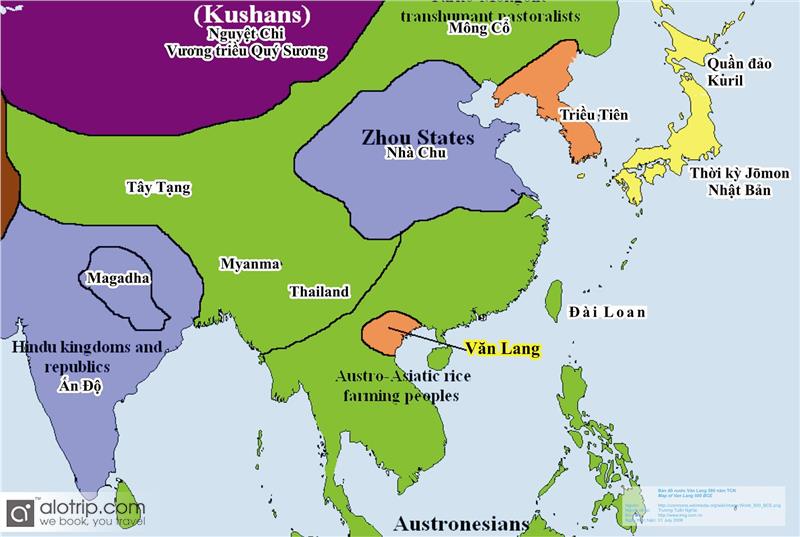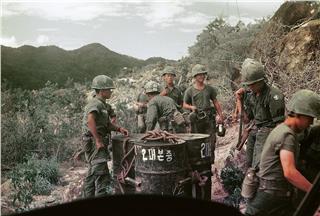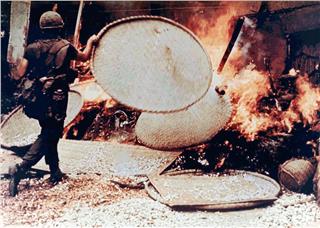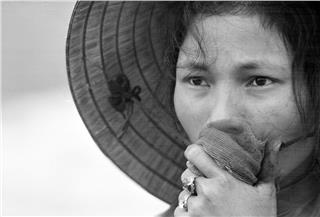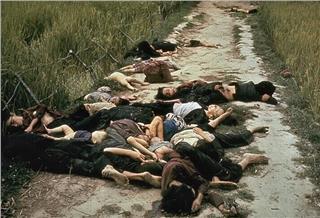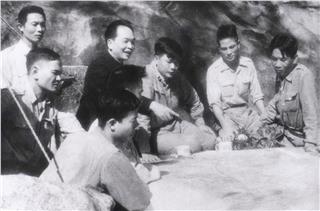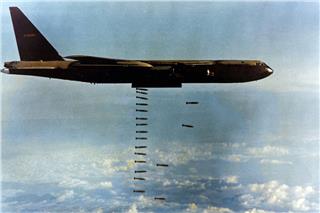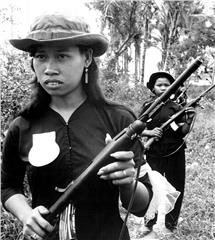History of Vietnam in early dynastic age from 2879 to 111 BC experienced three dynasties including Hong Bang Dynasty, Thuc Dynasty and Trieu Dynasty. This period was remarked by the empire of Hung Kings with the culmination of human civilization.
From 2879 to 258 BC, it was Hong Bang Dynasty that had control in Vietnam. In the past, Northern Vietnam and Southern China used to be residences of many ethnic groups. Traditionally, Loc Tuc (2919-2794 BC) succeeded his predecessor as tribal leader, and tried his best to combine all tribes in 2879 BC. Hong Bang Dynasty began in 2879 BC under the power of Loc Tuc. After all tribes were connected together, Loc Tuc was honored as Kinh Duong Vuong (Kinh Duong King) who controlled tribes of a united ancient Vietnamese. He named his country as Xich Quy, with Ngan Hong in Red River Delta being its capital. After two time of changing capital to Ngan Hong and Nghia Linh, the last capital of the nation under the power of King Duong Vuong was in Nghia Linh. Geographical area of the country under Kinh Duong Vuong was extremely large, occupying all Red River Delta (today northern Vietnam), and a part of southeastern China. This is the best place for the supreme powerful king to establish his Hong Bang primitive country. King Duong Vuong is the first Hung King in the History of Vietnam.
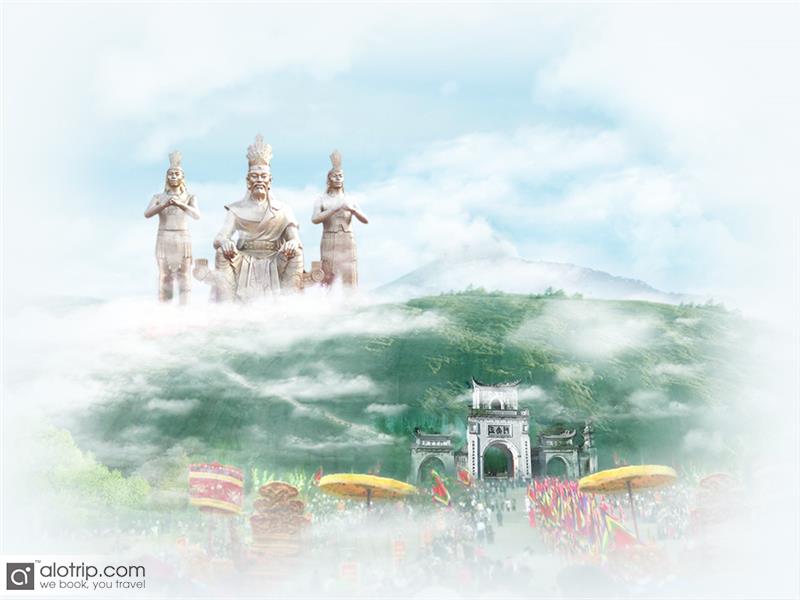
The next Hung Kings inherited the victory and developed the country. Hung Hien Vuong is the second Hung King who succeeded King Duong Vuong. He changed the name of the country into Van Lang. During the Hung Empire, the country followed the matriarchy. This kind of society was also popular in Southeast Asian countries and Pacific Archipelago. In different archaeological sites in Northern Vietnam, Dong Son Culture was explored. Many metal weapons and tools of the period were unearthed. The most prominent artifact among them is a large bronze drum. This type of drums might be made to serve the purpose of religious rituals. With delicate carvings on the surface, a vivid picture with warriors, houses, boats, birds and animals shown in concentric circles around a central sun shining re-presents the life in this period.
In the sixth Hung King, Hung Huy Vuong, Van Lang was invaded by a mysterious group called Xich Ty. Yet, Hung Huy Vuong fought and regained the greatness of the country. Hung Chieu Vuong also known as Lang Lieu, a son of the sixth Hung King, is the seventh Hung King. The winning in a cooking contest brought the crown to him. The legend of Banh Chung (Chung Cake), a traditional cake of Vietnam, originated from here, which reflects the profound understanding of Lang Lieu about the importance of land in agriculture at that time. This seventh dynasty and the next four dynasties in the early first millennium BC proved a stable and wealthy kingdom of Van Lang. From the twelfth to eighteenth Hung Kings, it was the heyday of late Hong Bang Dynasty. The eighteenth Hung King, Hung Due Vuong, is the last Hung emperor. He was defeated when fighting another Vietnamese group, Au Viet, which resulted in the collapse of the Hung King Empire.
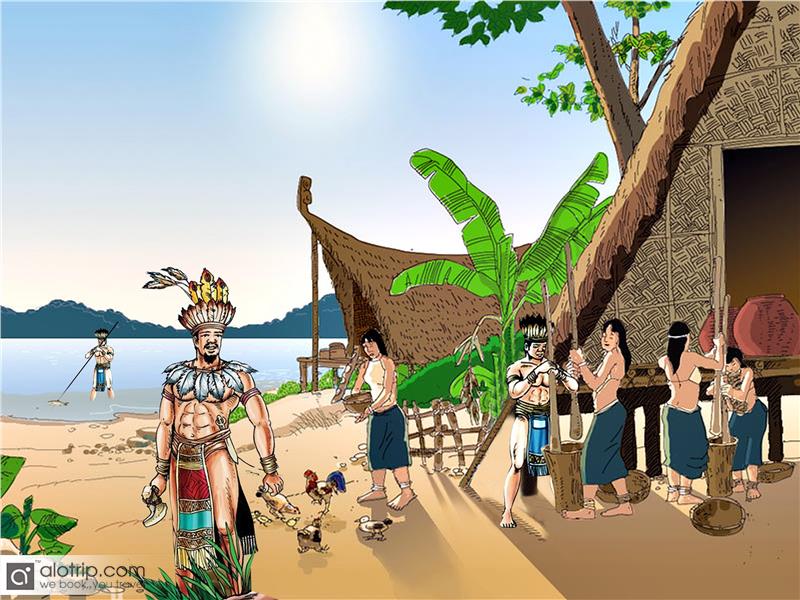
Culture in this period has some excellent features. Many legends primarily reflect people's lives in the period. Typically, Thanh Giong Legend tells a story about a young man wearing armor, riding an armored horse, and holding a rod of iron, fighting for protecting his country. It proves that the metal fabrication in this period was quite sophisticated. Alternatively, the legend of the Magic Crossbow that has ability of shooting thousands of arrows shows the wide usage of archery, especially in war. However, using working tools, and utilizing the strength of animals are still not popular. Ancient Vietnamese mainly use primitive tools, which are made of stone. Fishing and hunting are two other activities of ancient Vietnamese people to survive besides farming. They manipulate arrowheads and spears to hunt big animals like elephants, and then use ivories in exchange for iron ore with China. In this period, custom of betel chewing was widespread. In costumes, ordinary people rarely wear clothes, but loincloth. Religions include primitive animism (worshiping animals). In general, the primitive Vietnamese is not different from any other nations in Southeast Asia at this time.
The central and southern Vietnam at that time did not belong to the kingdom of Van Lang. Ethnics in these areas had different cultures from ancient Vietnamese in Red River Delta. The remains of circular earthworks and ramparts were found in present-day South of Vietnam and Cambodia border. The archaeological ruins are regarded as the formation of economic, social and cultural organizations since the first millennium BC.
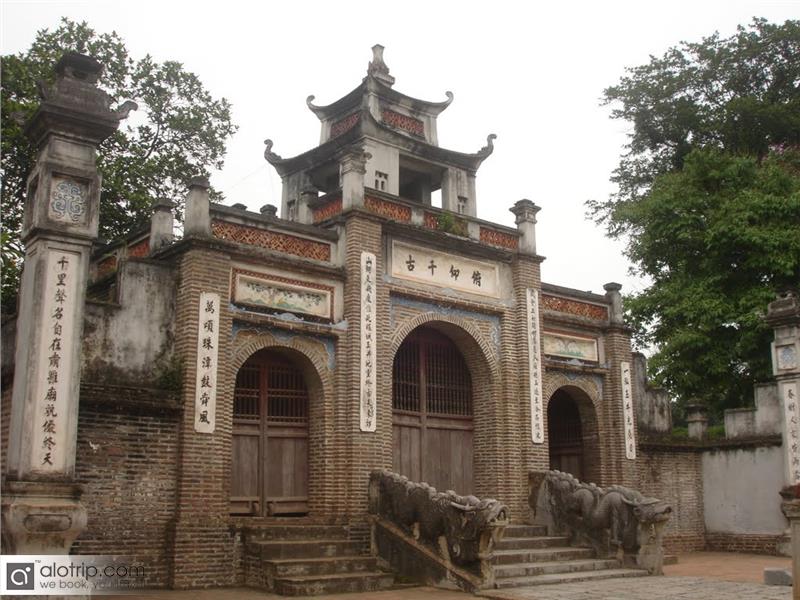
From 257 to 207 BC, Vietnam was dominated by Thuc Dynasty. In the 3rd century BC, Au Viet peoples migrated from south of China to Red River Delta and lived with Van Lang people. Thuc Phan, after preparing his arms well, defeated the 18th Hung King in 258 BC. He proclaimed himself An Duong Vuong (An Duong King) and changed the national name from Vang Lang to Au Lac. In 257 BC, a new nation, the kingdom of Au Lac, was born. It is the unity of Au Viet and Lac Viet peoples with the capital in Phong Khe (Phu Tho, in northern Vietnam). Co Loa Citadel, a famous citadel was built at that time by An Duong Vuong. Co Loa is a very large site and is the dominant presence in the northern Red River Delta, which would have required a large amount of human and natural resources to build in its time. Co Loa Citadel is seen as one of the most ancient, largest citadels with the unique structure of ancient Vietnamese’s ramparts.
In 207 BC, Trieu Dynasty (Zhao Dynasty) invaded the kingdom of Au Lac, and Trieu Da (Trieu Vu King) defeated An Duong Vuong. After annexing Au Lac in 208 BC, Trieu Da merged Au Lac into his own land in Nam Hai (today Guangdong). Then, he proclaimed himself as the king of a new independent nation called Nam Viet (South Viet or South Yue). Some people believe that the control of Trieu Dynasty was the beginning of China's domination in Vietnam, as Trieu Da used to be a commander under a dynasty in China. Meanwhile, others claim that this is still an independent period of Vietnam. Because of during living in Nam Viet, people of Trieu Dynasty were assimilated by the culture of Au Lac. They ruled independently of Han Dynasty. At that time, Trieu Da even declared himself an emperor, equivalent to the Chinese emperor in the north.
